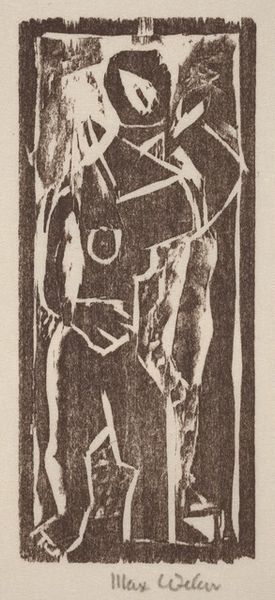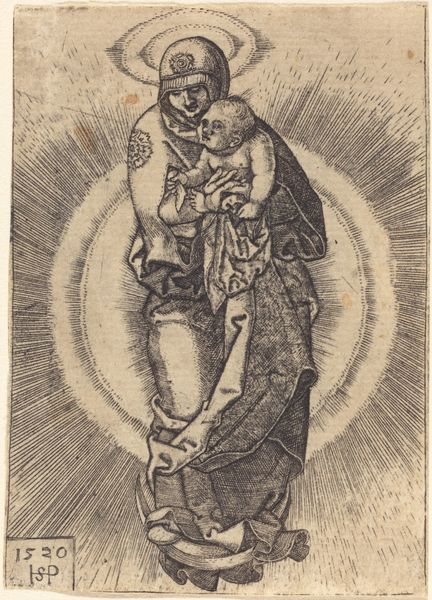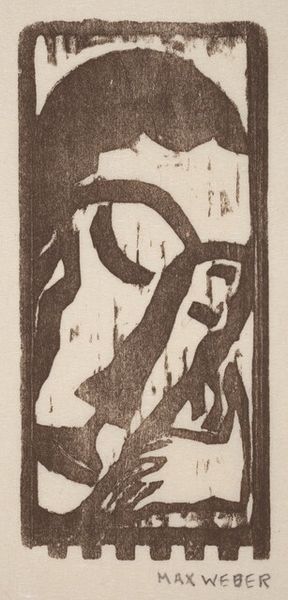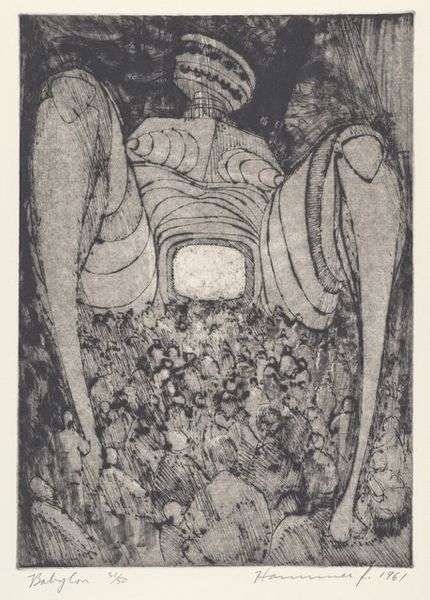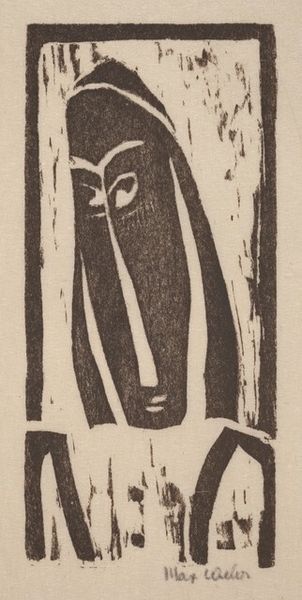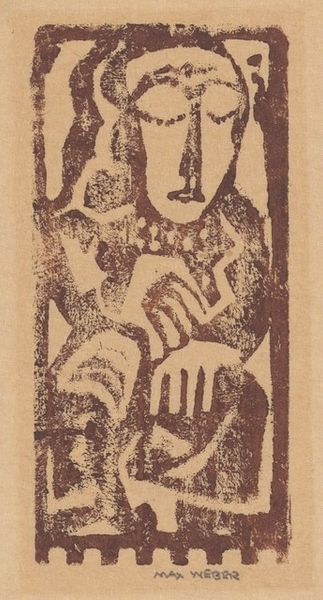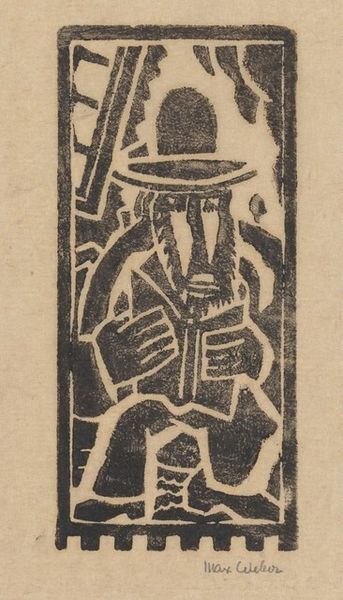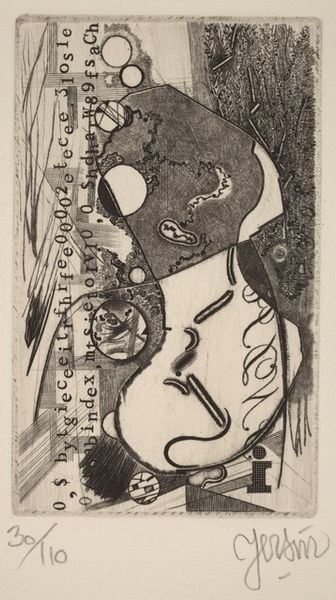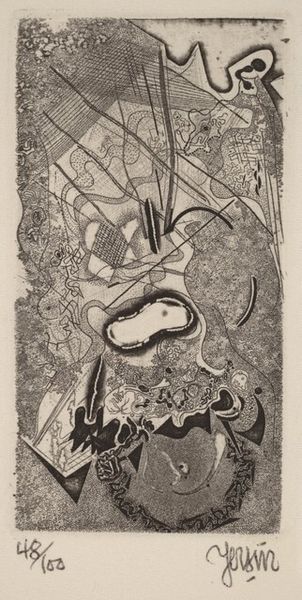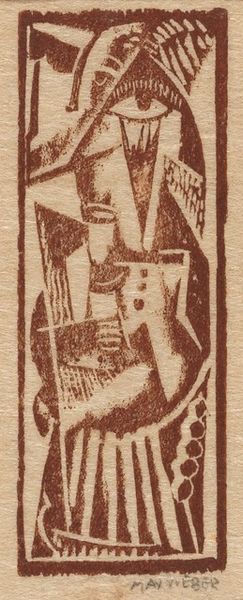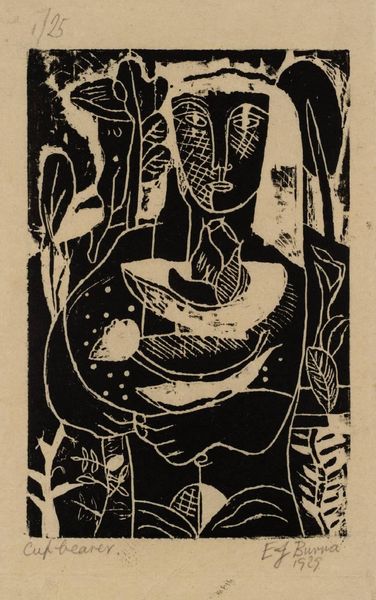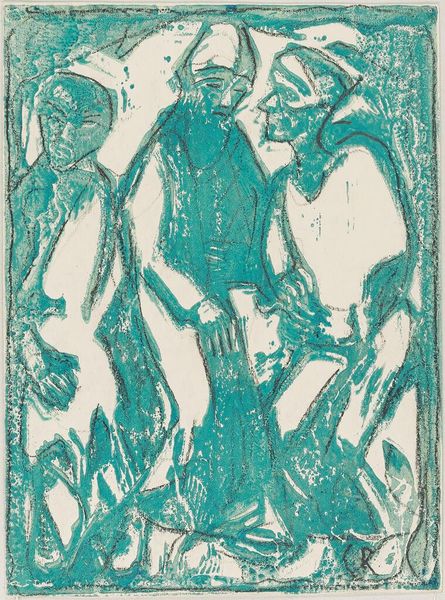
# print
#
figuration
#
geometric
#
abstraction
#
modernism
Dimensions: plate: 37.5 x 26.7 cm (14 3/4 x 10 1/2 in.) sheet: 37.5 x 26.7 cm (14 3/4 x 10 1/2 in.)
Copyright: National Gallery of Art: CC0 1.0
Curator: Let's take a look at Roy Lichtenstein's "Indian and Teepees," a print made between 1951 and 1952. It's quite evocative, isn't it? My first impression is that it feels almost like an encoded message, with the stark geometric forms against that dark, textural background. Editor: There's definitely an archaic feel here, and my attention is drawn to those stylized figures and objects rendered in such stark, contrasting tones. Do you find it visually arresting too? It feels like a kind of map using imagery. Curator: Exactly. Lichtenstein was experimenting heavily with printmaking techniques at this time, trying to find ways to evoke flatness and depth simultaneously. The etching process here gives the entire piece an almost handmade quality, a definite contrast to his later Pop Art aesthetic with those machine-printed Ben-Day dots. The medium very deliberately creates a very crafted feel. Editor: The way the motifs have been flattened and reduced intrigues me. Notice the arrangement, particularly the abstracted figure. The visual language reads as an amalgamation of indigenous symbols and perhaps Lichtenstein's own iconography. There is a layering of cultural meaning occurring. Curator: Absolutely. Lichtenstein’s interest in early American art and imagery is clear in the content here. But the act of re-interpreting and printing elevates and modernizes it, drawing from this wealth of pre-existing artistic imagery, the social landscape too. It's not simply about appropriating; it’s also a dialogue with the artistic practices of the past. Editor: So you perceive this almost like a commentary, on both the culture and modes of representing the figures of native people and themes within culture? Considering he created this fairly early in his career before embracing popular culture with Benday dots, there may have been an undercurrent of the symbolic already? Curator: Yes, the act of re-imagining these signs with the tools of modernism, it's about both the history and the physical process of making. These very considerations will later feed into his mature Pop style. Editor: Well, examining those components provides some insight into the context of its construction as we view it now. Curator: A fascinating crossroads indeed between Lichtenstein’s exploration of media and engagement with our cultural imagery.
Comments
No comments
Be the first to comment and join the conversation on the ultimate creative platform.
